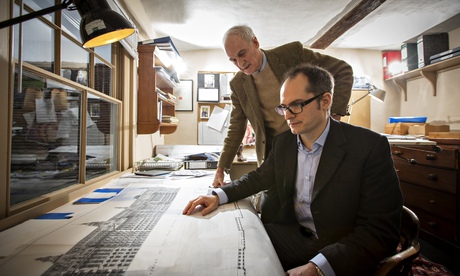Sajid Javid, the communities secretary, must decide this week whether to call in one of the most critical decisions in urban planning. Westminster city council wants to allow a “starchitect”, Renzo Piano, to erect a 19-storey glass cube in a conservation area directly overlooking Paddington station.
The cube is supposedly an alternative to the 72-storey Paddington pole of luxury flats that Irvine Sellar, the builder, proposed in October 2015 but then withdrew in a hail of criticism. It is the classic developer’s gambit of trying something outrageous and then “conceding” what is only a little less so.
Under its late leader, Simon Milton, Westminster – in the heart of our capital – guarded its appearance and rendered itself among the most habitable places to live and do business in Europe. Since his departure, lumpen glass agglomerations have erupted. The Praed Street area of Paddington is a surviving quarter of small streets, warehouses, workshops and a handsome Victorian postal sorting office. It is a classic transitional district – hence its status as a conservation area.
We do pay a measure of attention to our urban heritage. In January over £17m was allocated towards revitalising 10 rundown conservation areas across the UK. The Heritage Lottery Fund has invested over £288m of national lottery money in more than 439 projects. But national good intentions are not always enough. The policing of conservation areas by local government works when officials stick to the rules.
The Paddington cube offends every principle of a conservation area. It demolishes old buildings. It pays no respect to the district’s character, brutalising it with one overpowering structure. Westminster’s own published plan for the area stipulates that “tall buildings could not be accommodated without detriment to the townscape”. As for flexible uses, the collapse of the luxury property market means that the cube is entirely for commercial use.
Connoisseurs of municipal history should read the transcript of Westminster’s planning committee meeting in December. Councillors seem to grovel to Sellar’s plan. The chairman, Robert Davis, in his “declaration of interest”, records frequent entertainment by local property lobbies.
The committee disregarded protests from local residents and from St Mary’s hospital next door. It set much store by Historic England’s welcome of the withdrawal of the pole, ignoring its total opposition to the new project (to Historic England the loss of buildings and the cube’s scale were “fundamentally at odds” with the conservation area). True, the plan included the public benefit of a new eastern entrance to Paddington station. But that should be a matter for Network Rail and Transport for London; it should not justify wrecking a protected neighbourhood. For developers, conceding such a marginal “public benefit” is becoming a negotiated business rate. It is like Google paying a few million in corporation tax to the Irish government.
London is one of the world’s richest cities. It should be able to afford its regeneration with sensitivity. It is sad that an architect such as Piano should lend his name to a bland lump of glass such as this and to a philistine developer such as Sellar. It is equally sad that councillors charged with safeguarding the capital’s historic neighbourhoods should be so craven to those who would destroy them.
What is especially tragic for the future of local government, and ominous for the protection of conservation areas everywhere, is that a planning committee should need the intervention of a central minister to make it do its legal duty to its environment.
This case is against the local plan, against the spirit of a conservation area and riddled with conflicts of interest. If Javid fails to call it in, he sends a message: the much-abused concept of urban conservation is dead.
• This article was amended on 9 February to amend a reference to English Heritage to Historic England.










